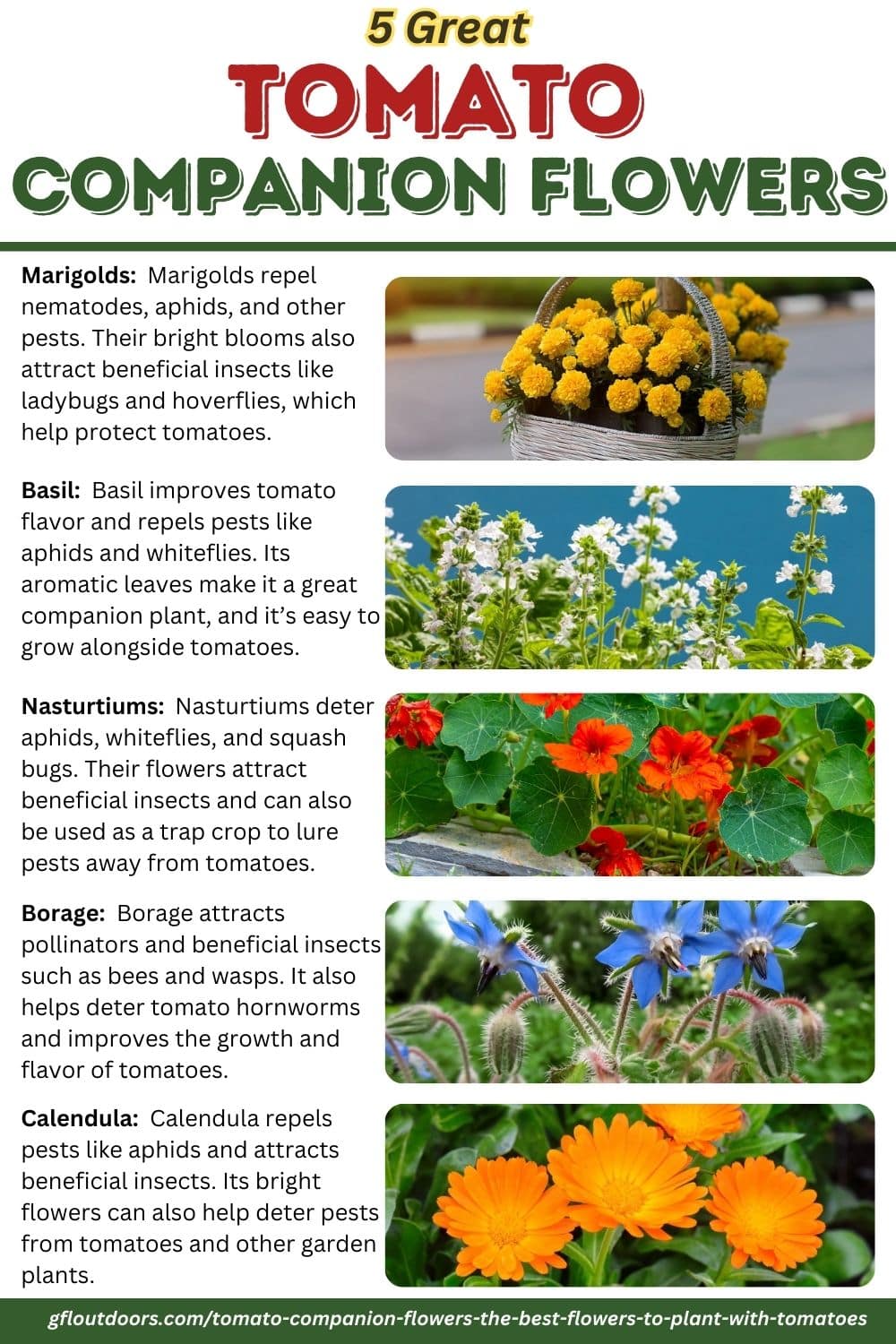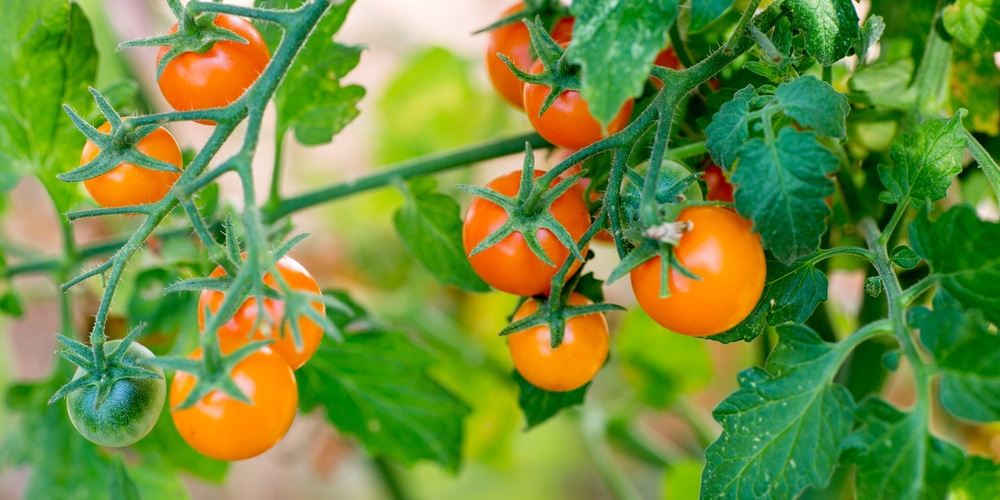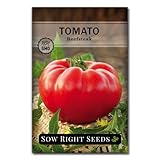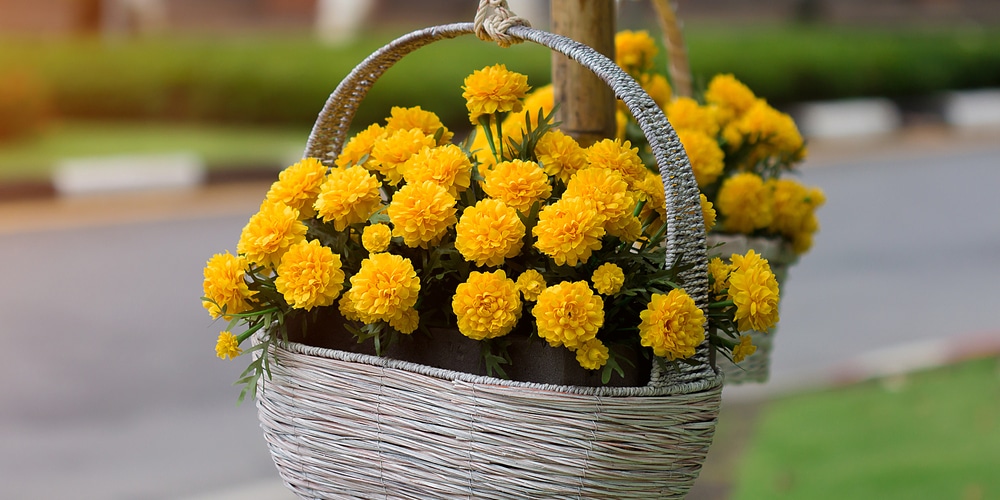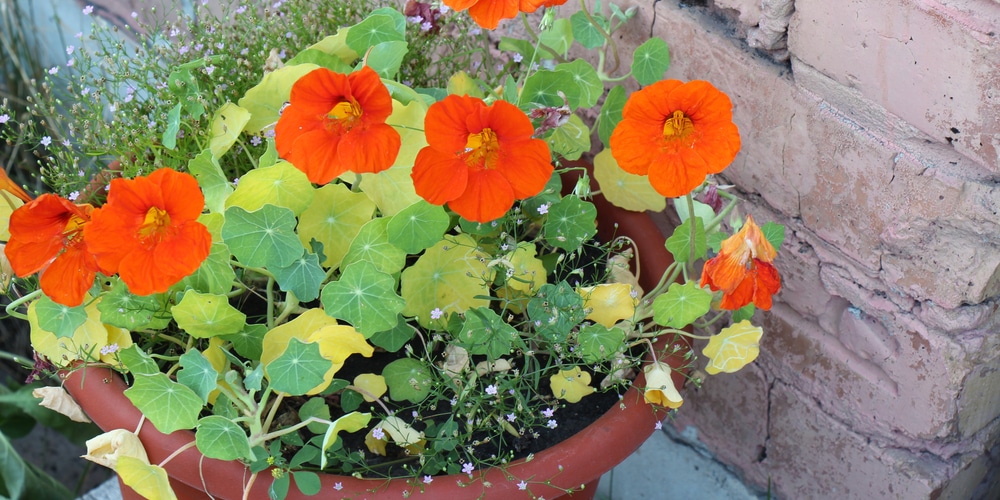Most gardeners that start growing vegetables in their yards do so with tomatoes. These veggies are one of the most popular edible plants as it is versatile and productive. Did you know that planting tomato companion flowers next to your crop can improve yields?
Under the ideal conditions, your plant will give you plenty of fruits! Plus, if you don’t live in a region with an optimal climate for the growth of tomatoes, you can do so in a greenhouse or even indoors.
You can also grow tomatoes in containers on balconies: provided these plants receive adequate sunlight, they will keep growing.
But if you have some experience growing vegetables in your garden, you might know that pests might be an issue sometimes, especially with tomatoes.
And if you don’t like using pesticides, companion planting might be one of your best options. If you feel lost, don’t: we are here to help you. Here, you can find our recommendations about Tomato Companion Flowers!
What Is Companion Planting?
Not everyone is familiar with this practice, so if the name sounds new to you, don’t worry: you are not alone.
Companion planting involves pairing different plants to make the most out of their qualities. It is about thinking carefully of each plant’s needs and requirements and understanding how some species might help others.
The idea is to have your plants grow in an optimal environment where they can establish mutually beneficial relationships with each other, without competing for nutrients but by helping each other out.
Tomato Companion Flowers
Companions might help control pests, attract beneficial pollinators, provide some shade, reduce competition for weeds, or provide some nutritional benefit to the soil. Of course, the ideal companion plant should not compete with your tomatoes for water and nutrients.
But to learn more about what flowers to plant with tomatoes, keep reading! You’ll find everything you need to know in this essential guide!
Bee Balm
Yes, we know that bee balm is more of a herb than a flowering plant, but stay with us. This plant produces vividly colored blooms that will attract plenty of beneficial pollinators (including bees, as the name suggests) to your garden.
So, it makes for a perfect companion plant as it will ensure your tomatoes will reproduce and bear plenty of fruits. Also, its scent contributes to keeping some pests that might harm your veggies at bay.
Plus, it seems to contribute to improving tomatoes’ health and flavor. But be careful when planting this species as a companion: under the ideal conditions, it might become invasive.
Basil
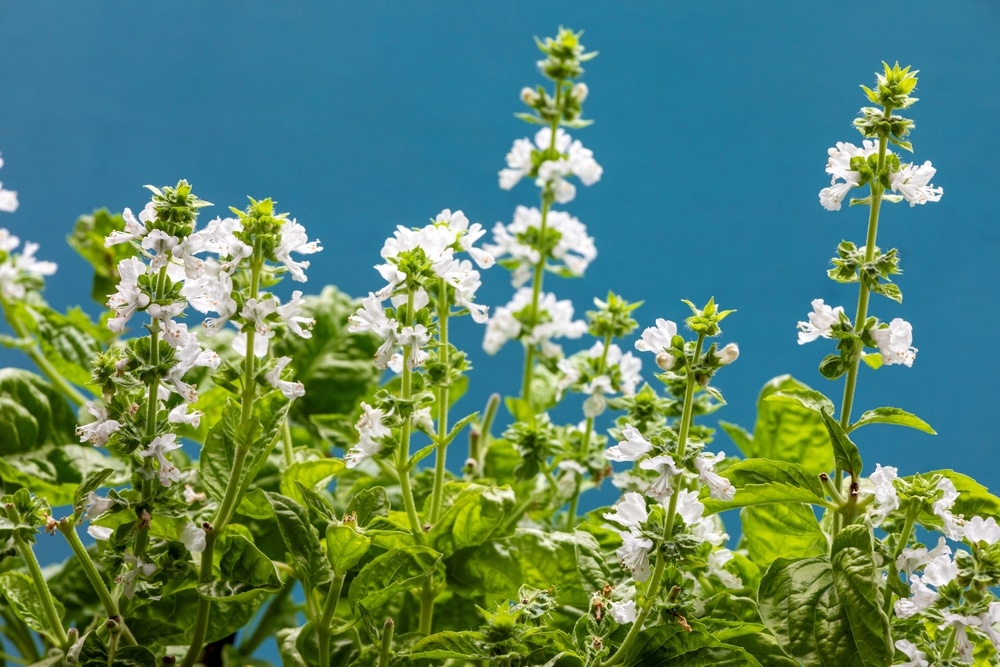
Marigolds
Marigolds are ideal companion plants. Marigolds and tomatoes thrive in similar conditions, which is a good thing, because you won’t have to put too much effort into ensuring both plants grow.
These flowers look beautiful, which is a plus that you may enjoy. Also, the plant excretes a chemical that seems to kill harmful nematodes that might spoil your tomato plants.
If that wasn’t clear already, it is time to stop dividing vegetables from ornamental flower beds!
Borage
Borage isn’t only a pretty flower to add to your garden. Yes, their blue color contrasts wonderfully against tomatoes, but let’s go beyond the aesthetics: these plants are perfect companions.
For starters, they contribute to deterring tomato hornworms. Additionally, their blossoms attract beneficial insects like bees and butterflies that keep other pests at bay.
Finally, it seems that borage improves growth and flavor in your fruits: is there something more you can ask? And the best part is that borage blooms for longer than most other plants, meaning you can enjoy its benefits for quite some time!
Amaranth
If you struggle with bugs munching on your tomato plants’ leaves, you should consider planting amaranth next to your tomatoes.
These plants are relatively easy to grow and host beneficial predatory beetles that will feed on harmful insects that tend to harm your veggies.
Plus, amaranth also gives you a yield: you can harvest its greens or seeds to use on salads, bake into bread and cookies, or stir into soups.
Nasturtiums
With nasturtiums, you can rarely go wrong. These attractive flowering plants can lure aphids and prevent them from ruining your crops.
Plus, nasturtiums are edible flowers, which you can use to brighten up your salads (which is never a bad idea: no one likes to eat boring food!).
Tomato Companion Flowers
Plant the above flowers a short distance from your tomatoes to make the most out of this beneficial relationship!
Related Article: Do Tomato Plants Come Back?
Last update on 2025-06-06 / Affiliate links / Images from Amazon Product Advertising API
